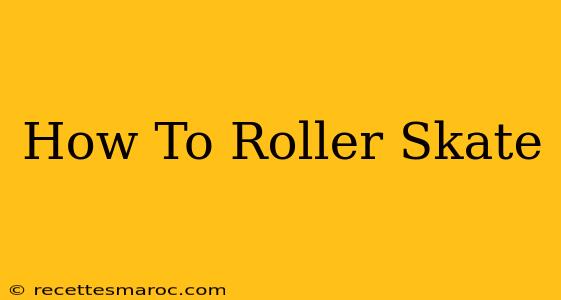So, you're ready to hit the rink (or the pavement)? Roller skating is a fantastic way to get exercise, have fun, and socialize. But before you glide into a graceful spin, you need to learn the basics. This guide will walk you through everything you need to know to start roller skating, from finding the right equipment to mastering basic techniques.
Getting Started: Choosing Your Gear
The right gear can make all the difference in your skating experience, ensuring comfort and safety. Here's what you need:
1. Roller Skates: Finding the Perfect Fit
- Type: There are several types of roller skates, including quad skates (the classic kind with two sets of wheels) and inline skates (like rollerblades). For beginners, quad skates are generally recommended as they provide more stability.
- Fit: Your skates should fit snugly but not be too tight. You should have a little wiggle room in your toes, and your heel shouldn't lift off the back of the boot. Consider visiting a local skate shop for expert fitting advice.
2. Protective Gear: Safety First!
- Helmet: A helmet is absolutely essential, especially when starting out. Head injuries are a serious risk, so don't skip this vital piece of safety equipment.
- Knee pads and elbow pads: These will protect your joints from scrapes and falls. Choose pads that are comfortable and fit well.
- Wrist guards: Wrist injuries are common, so wrist guards are highly recommended.
Mastering the Basics: From Standing to Skating
Once you've got your gear, it's time to learn the fundamentals:
1. Finding Your Balance
- Start slow: Begin by standing up with your skates on a flat, stable surface, like a smooth floor or carpet. Get comfortable with the feeling of the skates under your feet. Lean slightly forward to maintain balance.
- Use the walls: Practice balancing by holding onto a wall or stable object. Slowly start to lift your feet and feel the balance shift.
- Bend your knees: Bending your knees will help lower your center of gravity, making it easier to maintain balance.
2. The Basic Skating Stance
- Feet shoulder-width apart: Maintain a comfortable distance between your feet, roughly shoulder-width apart.
- Slight bend in your knees: Keep your knees bent throughout your skating.
- Weight distribution: Distribute your weight evenly between both feet.
3. Learning to Glide
- Push-off: Using one foot as a push-off, gently propel yourself forward.
- Alternate feet: Alternate your pushing foot, using one foot to push off and the other to glide.
- Small steps: Start with short, controlled pushes and gradually increase the distance.
4. Stopping
- Heel stop: This is the most common stopping technique for beginners. Slowly lift one heel and drag it behind you to slow down and stop. Practice this method until you feel comfortable stopping.
Practice Makes Perfect: Tips for Improvement
- Practice regularly: Consistent practice is key to improving your skills and building confidence. Start with short sessions and gradually increase the duration.
- Find a safe space: Practice in a large, open area free of obstacles. Smooth surfaces like skating rinks or paved pathways are ideal.
- Take breaks: Rest when you need to avoid fatigue and potential injury.
- Have fun! Remember to enjoy the process of learning. Roller skating should be fun and rewarding.
Beyond the Basics: Exploring More Advanced Techniques
Once you've mastered the basics, you can explore more advanced techniques such as:
- Turning: Learning to turn is crucial for navigating various skating environments.
- Crossovers: Crossovers will significantly improve your speed and efficiency.
- Spinning: This is a fun and impressive skill that requires practice and coordination.
Learning to roller skate takes time and dedication. Don't get discouraged if you don't pick it up immediately. With patience, practice, and a positive attitude, you'll be gliding with confidence in no time! Remember safety first and always wear your protective gear. Happy skating!

